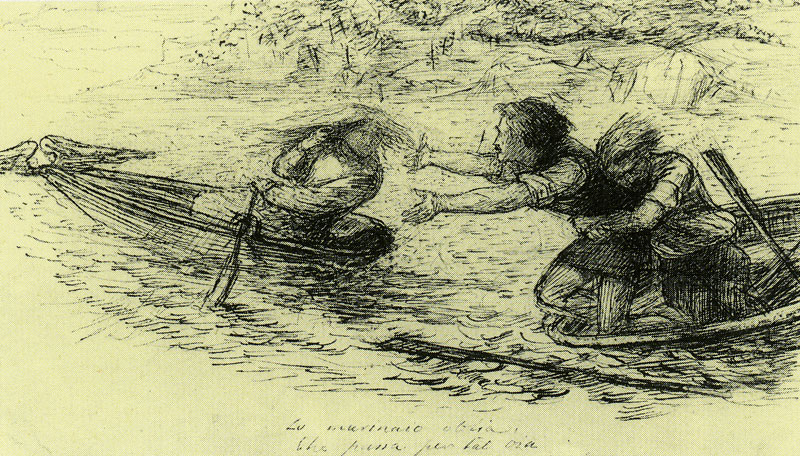
In Rossetti’s 1853 drawing Boatmen and Siren, one of the boatmen is captivated by the siren, but is saved from certain death by his companion. The accompanying inscription was written by Jacopo da Lentino, a Italian poet of the Rennaissance era whose work was translated by Rossetti in The Early Italian Poets:
I am broken, as a ship
Perishing of the song
Sweet, sweet and long, the songs the sirens know.
The mariner forgets,
Voyaging in those straits,
And dies assuredly.
Rossetti would revisit the idea of the Siren in 1877 with his work A Sea-Spell.
“The idea is that of a Siren, or Sea-Fairy, whose lute summons a sea-bird to listen, and whose song will soon prove fatal to some fascinated mariner”–Dante Gabriel Rossetti (The Works of Dante Gabriel Rossetti, 1911)
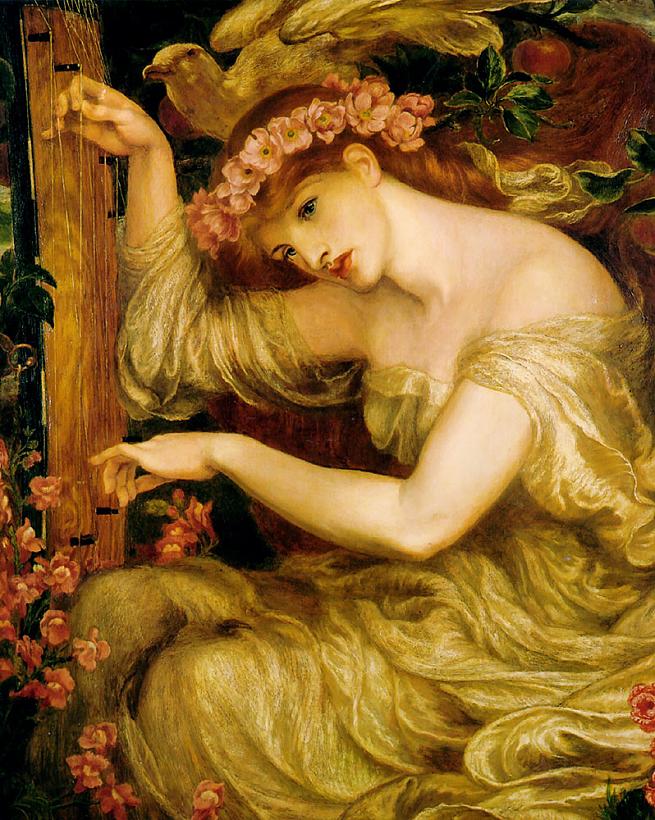
Oh, how I love A Sea-Spell. That magnificent bird. The color palette. And Alexa Wilding with her pale skin and all that fabric draped so beautifully. Rossetti wrote a sonnet to accompany the painting:
A Sea-Spell
Her lute hangs shadowed in the apple-tree,
While flashing fingers weave the sweet-strung spell
Between its chords; and as the wild notes swell,
The sea-bird for those branches leaves the sea.
But to what sound her listening ear stoops she?
What netherworld gulf-whispers doth she hear,
In answering echoes from what planisphere,
Along the wind, along the estuary?
She sinks into her spell: and when full soon
Her lips move and she soars into her song,
What creatures of the midmost main shall throng
In furrowed surf-clouds to the summoning rune:
Till he, the fated mariner, hears her cry,
And up her rock, bare-breasted, comes to die?
Siren, siren. She sinks into her spell. Who can resist her? Sir Edward Burne-Jones also captured sirens on canvas.
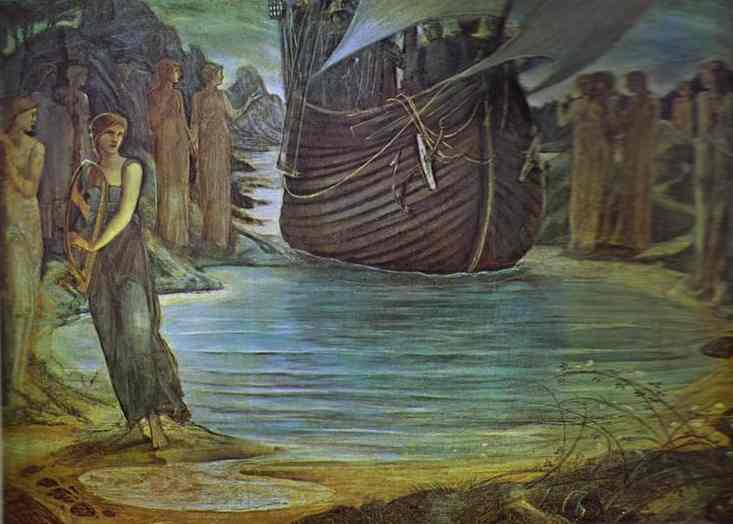
It is a sort of Siren-land–I don’t know when or where–not Greek Sirens, but any Sirens, anywhere, that lure on men to destruction. There will be a shore full of them, looking out from rocks and crannies in the rocks at a boat full of armed men, and the time will be sunset. The men shall look at the women and the women at the men, but what happens afterwards is more than I care to tell” — (Memorials of Edward Burne-Jones)
And, of course, if we are discussing Burne-Jones and the lure of the siren, we can not ignore The Depths of the Sea.
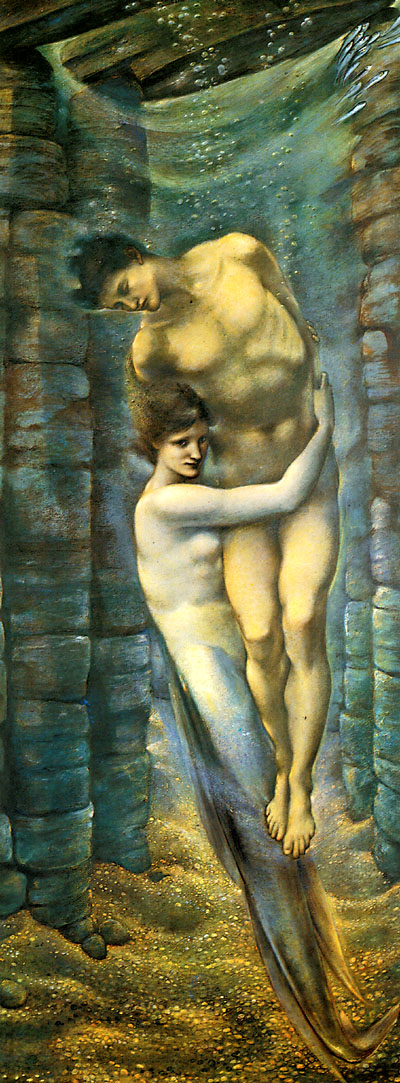
In the memorials of her husband, Georgiana Burne-Jones wrote: “We always associated ‘The Depths of the Sea’ with our dear “Siren”, for the face of the mermaid had some likeness to her strange charm of expression. It was this that Edward meant when, soon after beginning the picture, he said “I am painting a scene in Laura’s previous existence.” On Easter Eve this much-loved creature died.
It is the sorrowfullest ending,” he wrote, “poor, bright, sweet little thing. I dread knowing any more people, or watching them in a stupid unhelpful way the calamities that rain upon them.” And, a few weeks later, “I have no clear idea of a memorial to that little darling, but I should like it. I like praise of the dead, and keeping Saints’ days and holy days for them.” (Memorials of Edward Burne-Jones)
So the woman behind the face of the Siren met an untimely end. It is nice to know that her memory was treasured by both Edward and Georgiana Burne-Jones.
John William Waterhouse created a dramatic representation of Sirens in Ulysses and the Sirens.
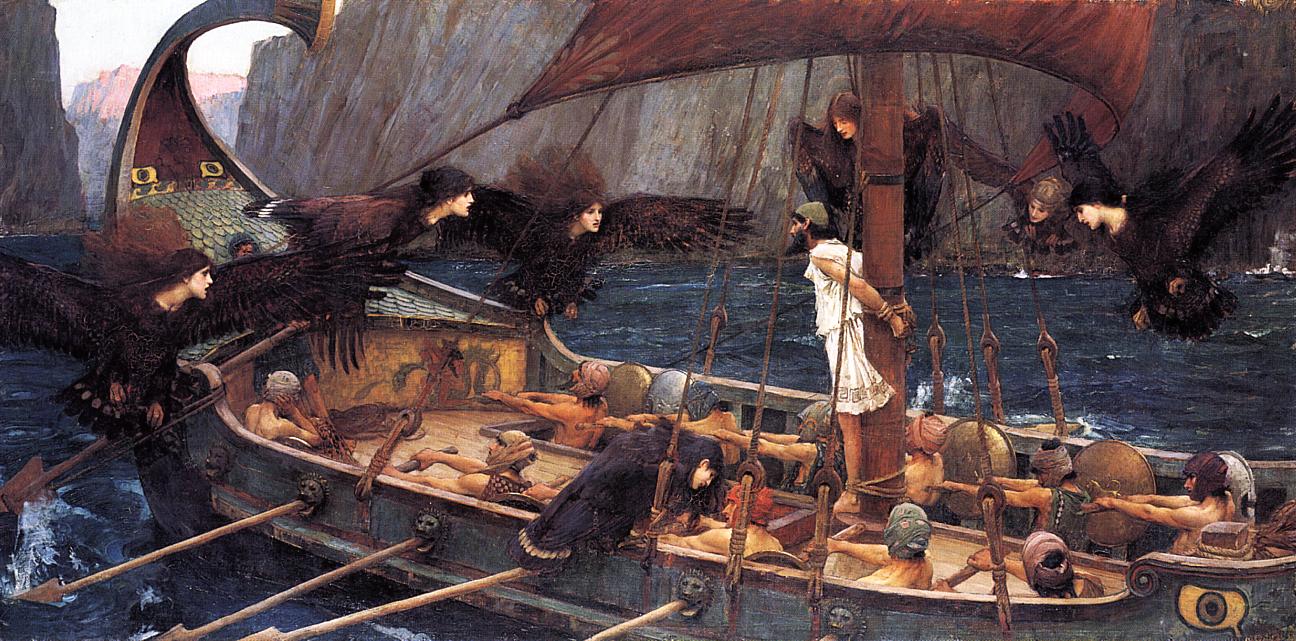 Waterhouse described his painting as “The Sirens, who with their melodious voices lured all navigators to destruction…were, according to classical tradition, creatures having the body of a bird with the head of a beautiful woman…They were informed by the oracle that as soon as any passed by without heeding their songs they should perish. Ulysses, warned by Circe, stopped the ears of his companions and ordered himself to be bound to the mast, and so successfully passed…After this the Sirens…threw themselves into the sea and perished”
Waterhouse described his painting as “The Sirens, who with their melodious voices lured all navigators to destruction…were, according to classical tradition, creatures having the body of a bird with the head of a beautiful woman…They were informed by the oracle that as soon as any passed by without heeding their songs they should perish. Ulysses, warned by Circe, stopped the ears of his companions and ordered himself to be bound to the mast, and so successfully passed…After this the Sirens…threw themselves into the sea and perished”
Sirens are not the only women related to water. Shakespeare created the ultimate ‘water woman’ when he wrote of Ophelia’s death in Hamlet.
I have a necklace with Millais’ Ophelia on it that I wear frequently. Recently, someone noticed it and made a comment that it’s strange to wear because it is, in their words, “an amulet of a suicidal girl”. My answer? Ophelia is so much more than that.
Ophelia has become a beacon for troubled teens or, perhaps, for women who mourn the mistakes they made in their adolescence. Girls are often branded for their actions in those precarious years and often carry the scars of judgement for a very long time. She is defined by the men in her life, which leads to her tragic end. Ophelia can be seen as an avatar, a symbol of innocence lost in the midst of all the power struggles and chaos around her.
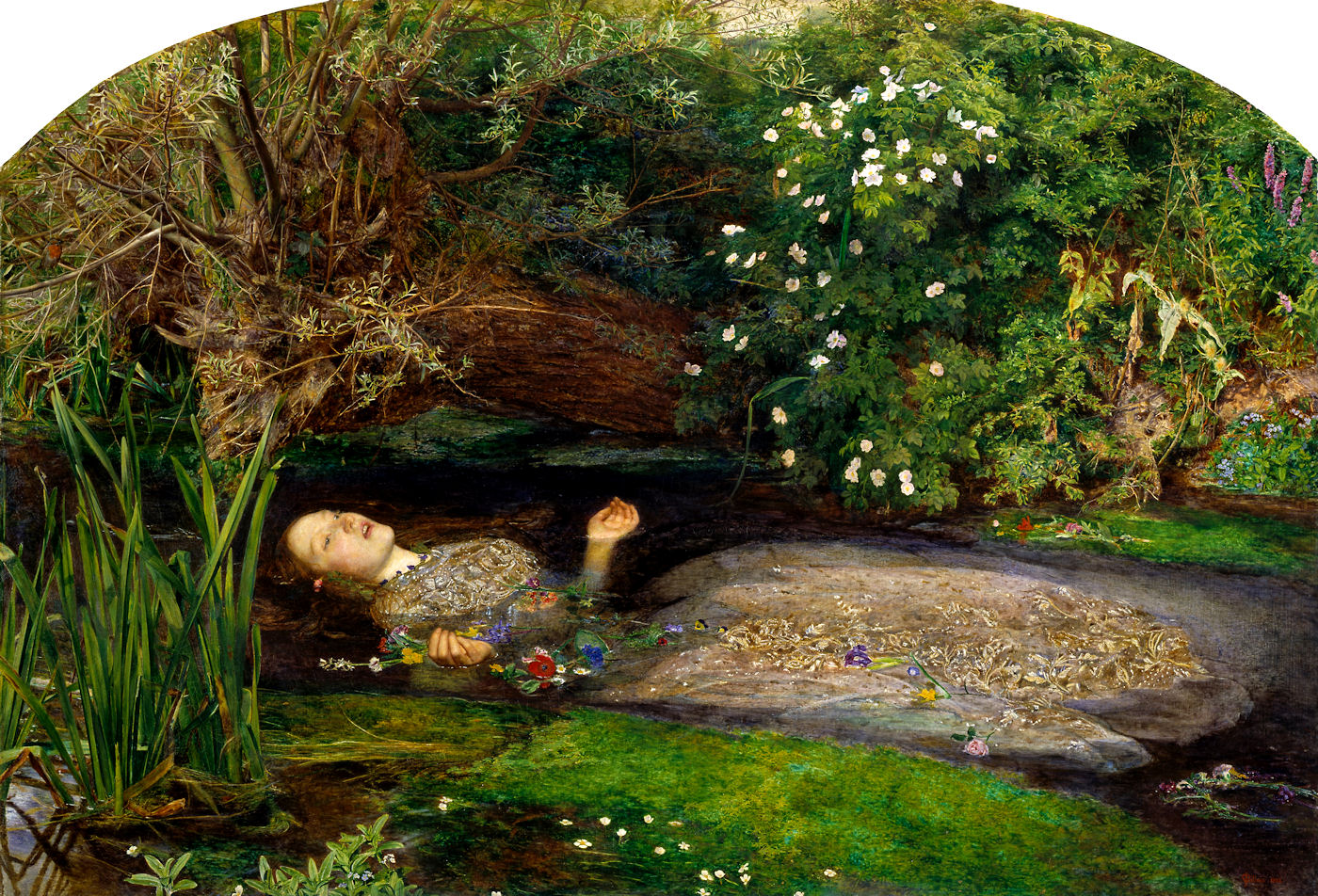
Living in a patriarchal world, Ophelia must always be the good girl. Until madness becomes her escape, that is. At this point in the play, Hamlet is noticeably absent. While he has been the one who seems mad in previous scenes, Ophelia picks up where he left off. Her character is almost his unwitting proxy and with method to her madness she sings songs and picks flowers, all the while making pointed comments designed to let the others know that she sees them exactly for what they are: her brother who now, like Hamlet, has a father to avenge, an adulterous queen who needs to repent, and a king who stole his throne by murdering his own brother. Ophelia is on the brink of losing her sanity, but she’s not going quietly. It is the adults around her that have failed her and her madness is partly of their creation.
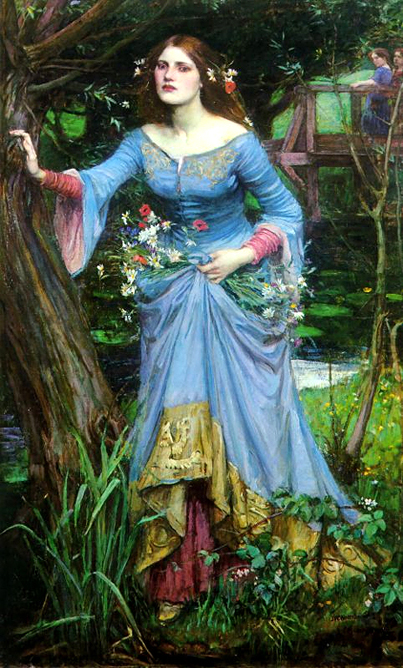
Shakespeare does not explicitly say that her death was suicide. I don’t believe she entered the water with the intent of ending her life. Rather, I think it was written as a tragic accident, indicative of Ophelia’s mental state. She sings as she floats, not understanding that the water and her garments were a lethal combination. I was reminded of this when reading the sad story of a bride who died while having a “trash the dress” photo session, a relatively new trend where brides purposefully ruin their gowns while a photographer captures the somewhat gleeful destruction on film. Misjudging how heavy the gown would become in the water, the unfortunate bride drowned. I do not share this to make light of the tragedy. I think it is important to note that with our modern mode of dress, it is easy to misunderstand the garments women wore in the past and the real danger such a long gown presents when worn in water. As Queen Gertrude describes, the gown bore Ophelia up when she first entered the water, due to its initial buoyancy. Then as they became “heavy with their drink”, her garments were a trap from which she could not escape.
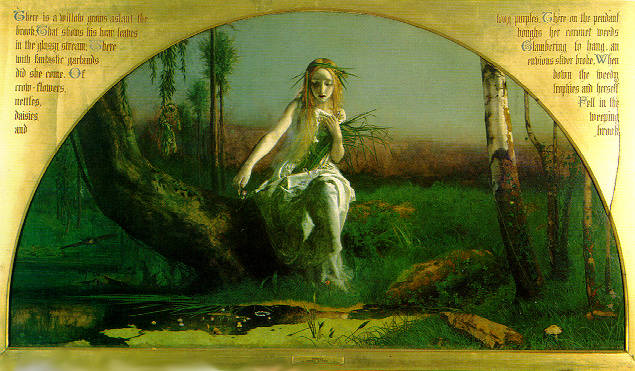
Shakespeare compared Ophelia to a mermaid when she drowned, which brings me back to Waterhouse and Burne-Jones:
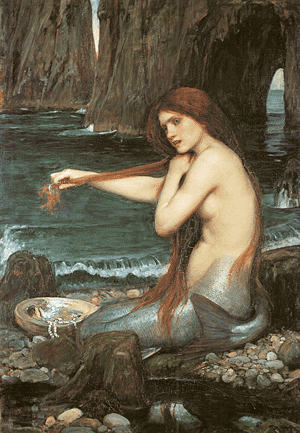
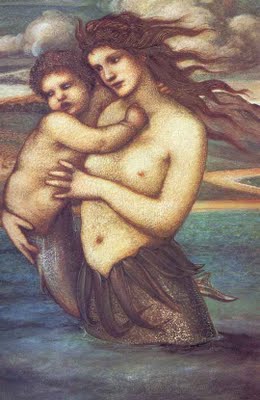
I’ve posted about mermaids before here and here. Almost every culture has its mermaid lore and people remain fascinated by them today.
There a many more examples of water-women in art, but I fear this post may already be too long. Water is a powerful metaphor, whether depicted on canvas by Victorian artists or used as a literary device by modern authors such as Neil Gaiman in his recent book The Ocean at the End of the Lane. Water cleanses. Water destroys.
“Full fathom five thy father lies;
Of his bones are coral made;
Those are pearls that were his eyes:
Nothing of him that doth fade,
But doth suffer a sea-change
Into something rich and strange.” –William Shakespeare, The Tempest
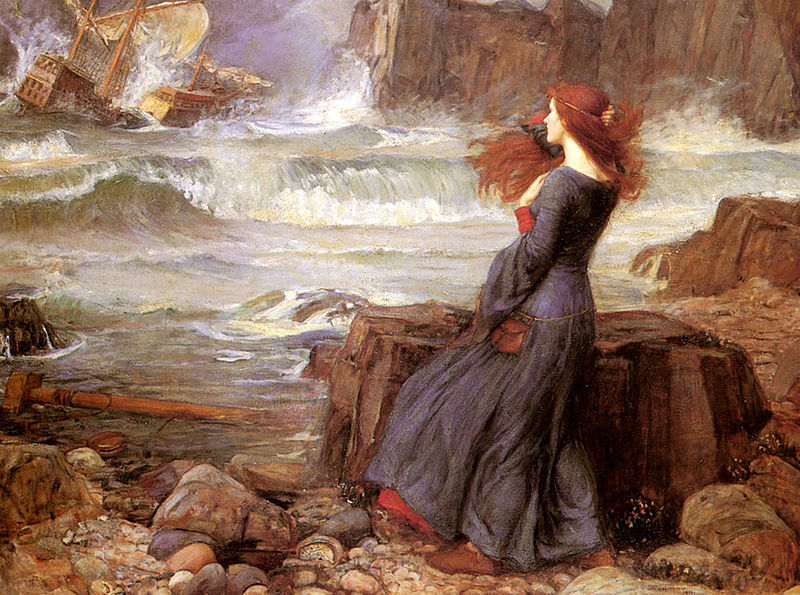

Miranda- The Tempest is one of my favourite paintings of all time. I love the idea of sirens, so powerful and beguiling. I never thought about the idea of the links between Ophelia and Sirens, but I did always think she looked oddly beguiling in Millais’ painting. Perhaps that sentiment was echoed in the Desperate Romantics series where the men fell in love with her watching her model in the bath, while Millais imagined his love interest, Ellie, in the same outfit, a siren, all wet, beckoning to him.
Have you ever heard “Song to the Siren” by Tim Buckley? It’s hauntingly beautiful.
https://www.youtube.com/watch?v=vMTEtDBHGY4
Thank you so much for sharing that! I had never heard it before and it is completely mesmerising. Beautiful.